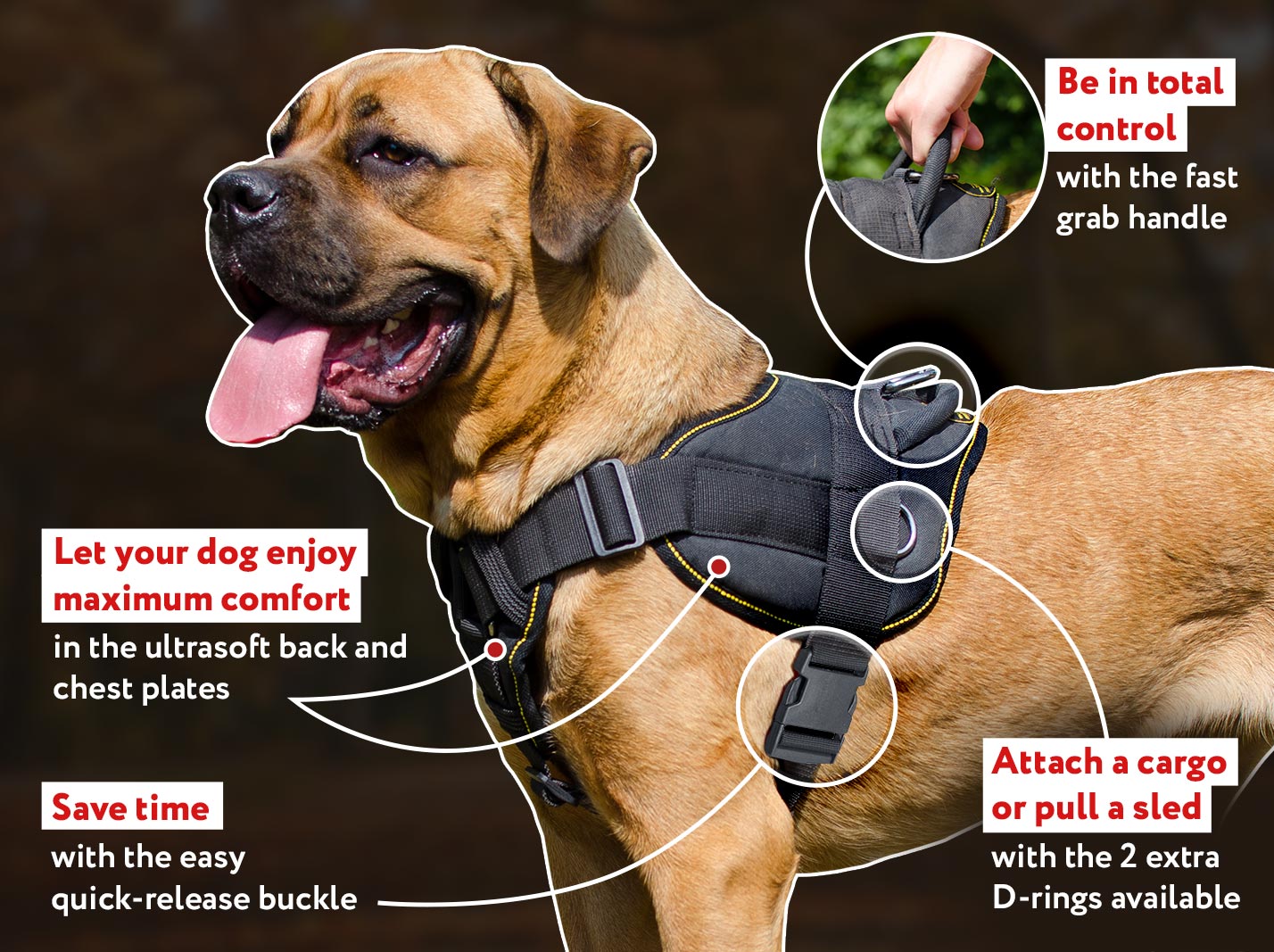
A Comfortable and Secure Way to Walk Your Dog
A dog harness is an essential tool for every dog owner, providing a comfortable and secure way to walk your furry friend. Unlike traditional collars, which can put strain on your dog's neck and potentially cause injury, a harness distributes the pressure evenly across their chest and shoulders, offering a safer and more enjoyable walking experience for both of you.
Benefits of Using a Dog Harness

There are numerous benefits to using a dog harness. Firstly, it gives you greater control over your dog's movements, making it easier to guide them and prevent pulling. This is especially beneficial for larger or stronger dogs that may be more difficult to manage with just a collar.
Additionally, a harness can help to reduce the risk of injury. If your dog tends to pull on their leash, the pressure is distributed across their chest rather than their neck, reducing the strain on their delicate throat area. This is particularly important for breeds prone to respiratory issues.
Furthermore, a well-fitted harness can discourage your dog from slipping out and escaping during walks. This is especially useful if you have a particularly curious or excitable dog who might be prone to pulling sudden disappearing acts.
Choosing the Right Dog Harness

When it comes to selecting the right dog harness, there are a few factors to consider. Firstly, you'll want to ensure that the harness is the correct size for your dog. It should fit snugly but comfortably around their chest and shoulders, without causing any rubbing or chafing.
There are various types of harnesses available, including back-clip, front-clip, and dual-clip options. Back-clip harnesses are the most common and are suitable for most dogs. Front-clip harnesses are ideal for dogs that tend to pull, as they discourage pulling by redirecting their attention towards you. Dual-clip harnesses offer the best of both worlds, allowing you to choose between front and back attachment points.
It's also important to consider the material of the harness. Opt for a durable and weather-resistant material that can withstand regular use and various outdoor conditions. Adjustable straps and buckles are also beneficial, as they allow you to achieve the perfect fit for your furry friend.
Introducing Your Dog to a Harness

Some dogs may need a little time to adjust to wearing a harness, especially if they have only ever worn a collar before. To introduce your dog to their new harness, start by allowing them to sniff and investigate it. Reward them with treats and praise to create positive associations.
Next, gently slip the harness over your dog's head and secure the straps. Ensure it is snug but not too tight, and check that your dog can move their legs freely. Take it slow during the first few walks, allowing your dog to get used to the feeling of wearing a harness.
The Importance of Regular Harness Checks

Once your dog is comfortable wearing their harness, it's crucial to perform regular checks to ensure it remains in good condition. Inspect the straps, buckles, and attachment points for any signs of wear or damage. Replace the harness if it becomes frayed or weakened, as a damaged harness may compromise your dog's safety.
It's also essential to regularly adjust the harness to accommodate your dog's growth or fluctuations in weight. A properly fitted harness ensures maximum comfort and security during walks.
Conclusion
A dog harness is a must-have accessory for every dog owner. It provides a comfortable and secure way to walk your dog, offering numerous benefits over traditional collars. With the right harness, you can enjoy greater control, reduce the risk of injury, and prevent your furry friend from escaping during walks. Remember to choose a well-fitted harness, introduce it gradually to your dog, and perform regular checks to ensure its safety and effectiveness.